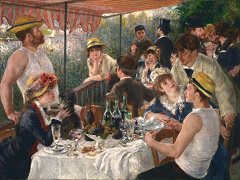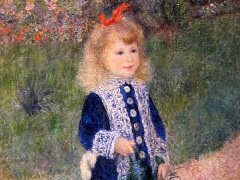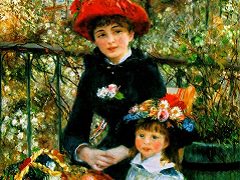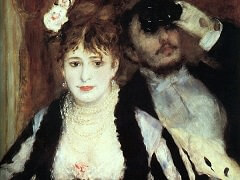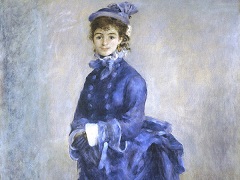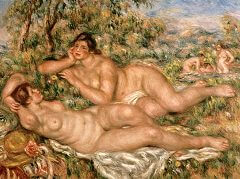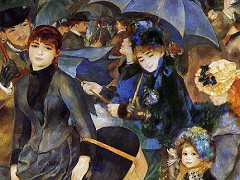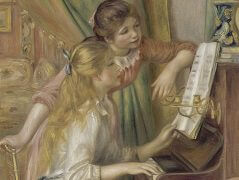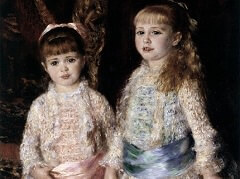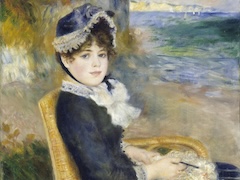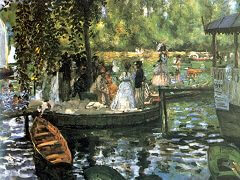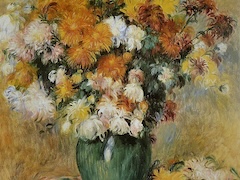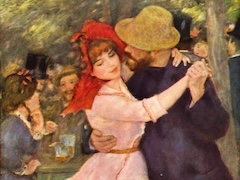Bal du moulin de la Galette, by Pierre-Auguste Renoir
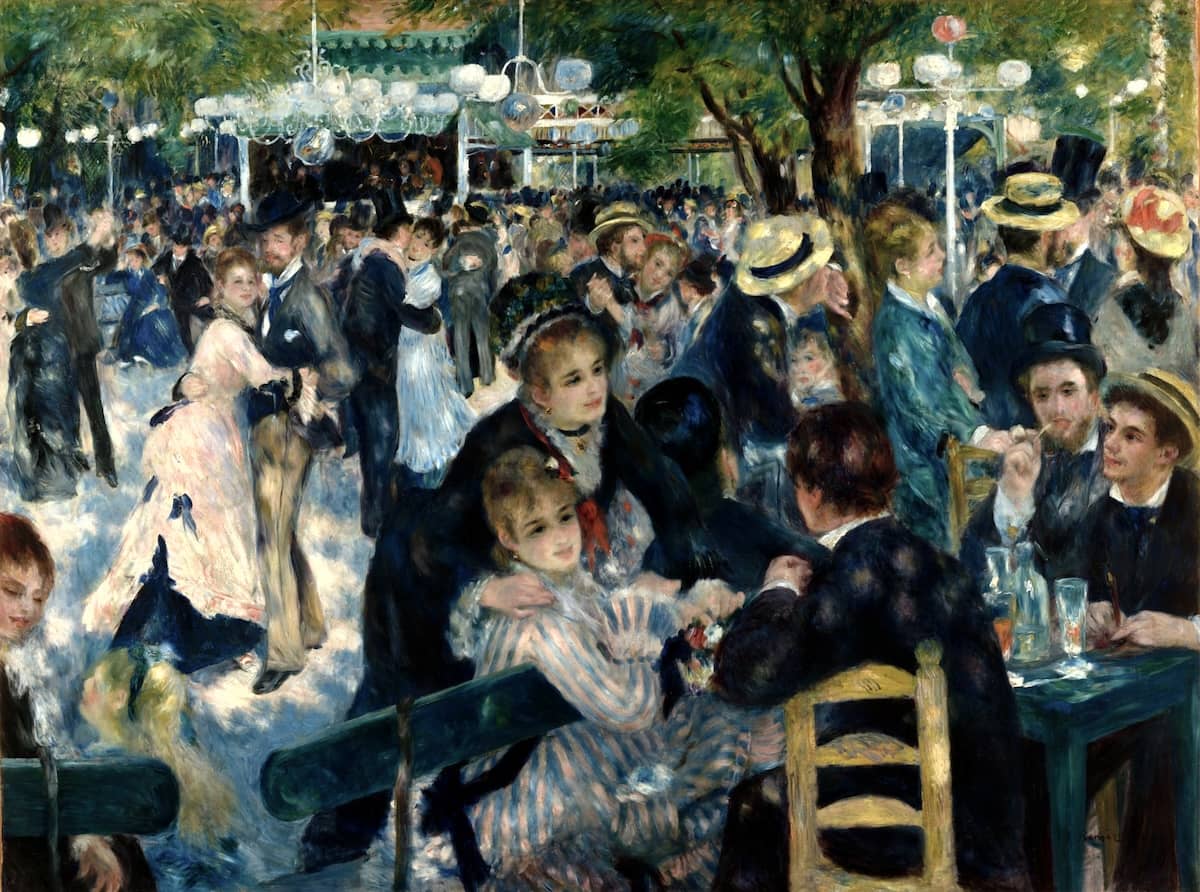
"The world knew how to laugh in those days! Machinery had not absorbed all of life: you had leisure for enjoyment and no one was the worse for it." With this happy, wonderful picture before us, Renoir's reminiscence seems a pallid understatement. The canvas is so rich in attractions, so full of enchanting details, that it becomes nothing less than an affirmation of the goodness of living.
The painting celebrates the triumph of youth: the women are radiantly beautiful, the men as dashing and debonair as young blades ought to be. Renoir has become famous as a painter of the nude; but what painter has clothed the human form more entrancingly? And with unbelievable virtuosity, he has animated his figures with an amazing variety of postures and activities - bold, relaxed, eager, withdrawn, flirtatious - all of them graceful and natural.
There are bits of still life, shimmering patterns of the light fixtures, children - like the dainty blonde creature in the lower left-tucked in here and there. One even fancies that the buzz of voices, the shuffle of feet, and the gay dance tune are part of the composition.
This is one of Renoir's largest and most ambitious compositions; yet he was not to regard it as one of his best paintings. Despite its apparent crowding and turbulence, it reveals a studied organization. The triangular foreground group is related through silhouette and color to the group at the trees; and this group, through yellow and gold-brown tones, becomes part of a vertical unit that provides stability to the right of the canvas. The other side allows easy entrance into space over a ground dappled blue and pink-Renoir's way of creating the effect of sunlight and shadow without introducing neutral dark values. By emphasizing the vertically of the dancing figures through sharp color contrasts, Renoir echoes verticality again, and repeats it playfully in the posts in the background.
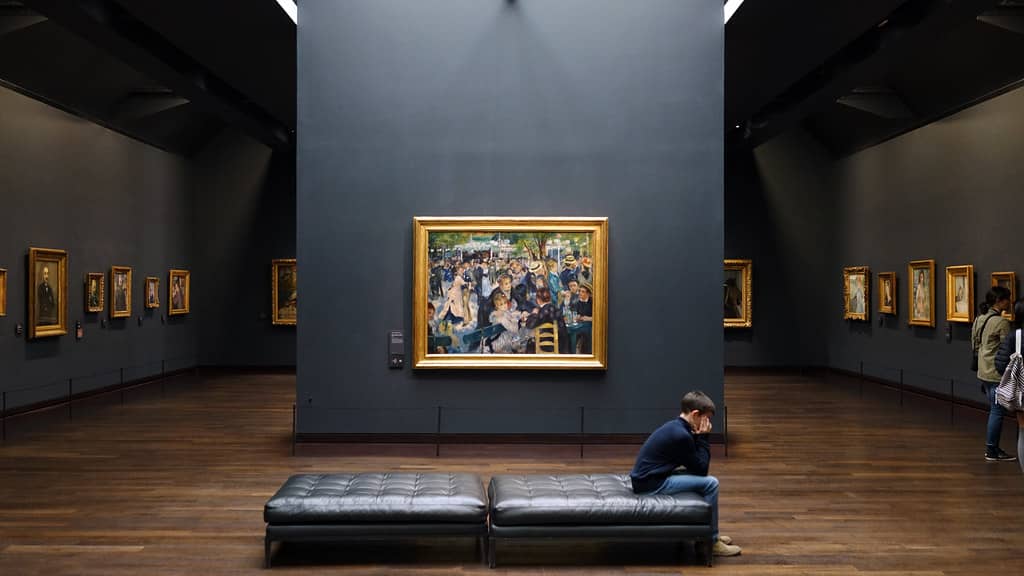
These are only a few of the linear relationships; varied curves set up another series of rhythms. Rich color is contrasted with plain, and each is developed into an inde-pendent sub-theme: reds, yellows, blues, greens, blacks. Light flickers across the scene, resting here and there for compositional emphasis. Subject and method have been completely integrated into a unity that is one of the great achievements in the art of painting.

